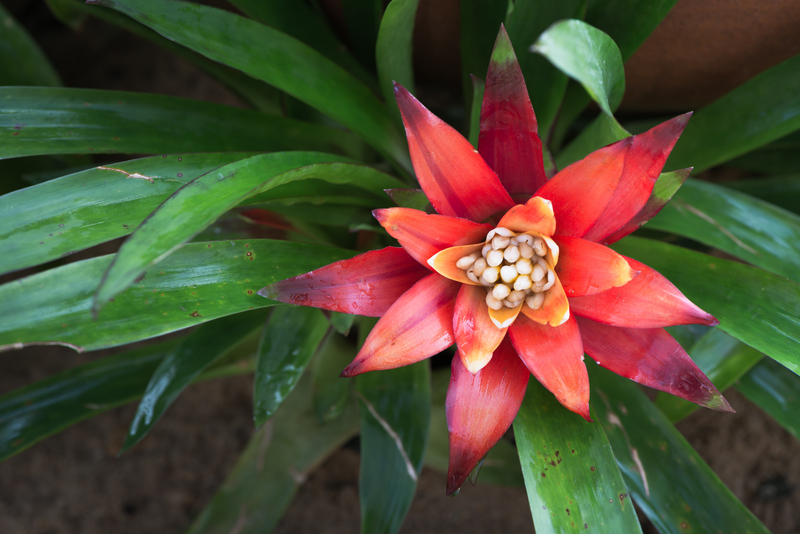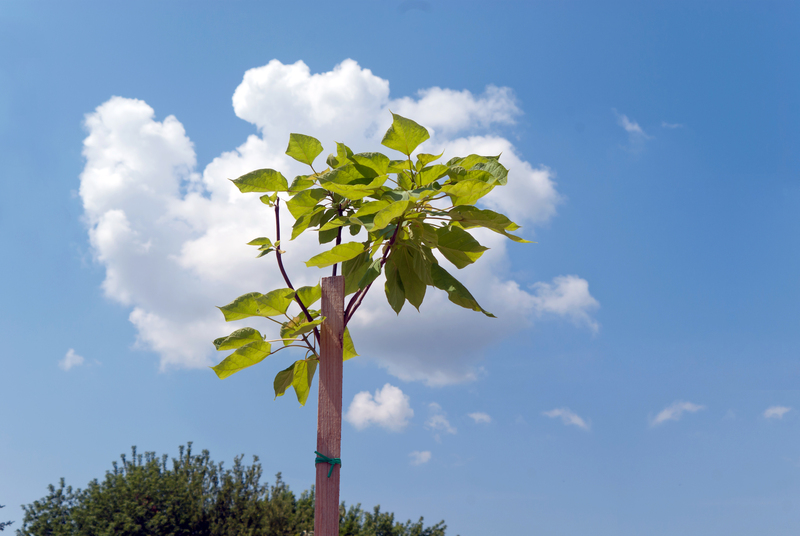Unlock Weed Control Success with These Three Tips
Posted on 29/06/2025
Unlock Weed Control Success with These Three Tips
Weed management is one of the most crucial tasks for any gardener, landscaper, or homeowner. A thriving expanse of green may be marred by pesky weeds that threaten the health and aesthetic of your lawns, gardens, or agricultural fields. Fortunately, attaining weed control success doesn't have to be a constant struggle. By following proven methods and strategies, you can gain the upper hand against unwanted plants and enjoy a lush, weed-free landscape.
In this comprehensive guide, we share three essential tips to unlock successful weed control. Whether you're combating dandelions in your lawn, invasive grasses in your flower beds, or unwanted vegetation in your vegetable patch, these actionable tactics will enable you to reduce weed infestations and create a healthier, more beautiful outdoor space.
Why Effective Weed Management Matters
Weeds are more than just an eyesore--they compete fiercely with desirable plants for resources such as water, sunlight, and nutrients. Left unaddressed, weeds can reduce crop yields, damage turfgrass, and compromise the vitality of your garden. Proper weed control not only enhances the visual appeal of your property but also supports the overall health of your lawn or garden ecosystem.
- Prevents nutrient and water competition - Weeds absorb the essential resources meant for your desired plants, stunting their growth.
- Reduces the spread of diseases - Many weeds harbor pests and pathogens that can spread to healthy plants.
- Improves property value and curb appeal - A weed-free landscape is more attractive and valuable.
- Safeguards the environment - Responsible weed management practices minimize the need for excessive chemical usage, protecting soil and water quality.
Achieving weed control success is an ongoing process, but with the right techniques, you can greatly minimize their impact.

Three Essential Tips for Weed Control Success
Let's unlock the door to a healthier, weed-free lawn or garden with these three proven tips. Each of these strategies tackles weeds from a different angle for comprehensive management.
1. Practice Preventative Weed Control
The best way to control weeds is to stop them before they start. Prevention is your first--and often most effective--defense against weed problems. By creating an environment that favors your chosen plants and makes it difficult for weeds to germinate, you'll save time and effort in the long run.
Mulching: Nature's Weed Barrier
Applying a thick layer of mulch acts as a protective shield, blocking sunlight from reaching weed seeds and suppressing their growth. Organic mulches, such as wood chips, straw, or shredded leaves, are environmentally friendly and provide the added benefit of enriching the soil as they decompose. Inorganic mulches like landscape fabric or gravel are also effective in certain situations.
- Apply 2-4 inches of mulch for maximum weed suppression.
- Use mulch in flower beds, around trees, and between vegetable rows.
- Top up mulch as it decomposes to maintain its effectiveness.
Dense Planting and Groundcovers
Dense planting and the use of groundcovers can also outcompete weeds by shading the soil and reducing open spaces where weeds can establish. Species like creeping thyme, vinca, and clover are perfect for filling gaps and creating living mulch.
Proper Lawn Care Practices
A healthy, thick lawn naturally crowds out weeds. Mow high to keep grass blades tall, which shades weed seeds and discourages their growth. Regular fertilization and overseeding can help your turf compete vigorously against encroaching weeds.
2. Identify and Remove Weeds Efficiently
Not all weeds are created equal, and effective weed management requires knowing your enemy. Accurate identification helps you target your weed control efforts and select the most suitable removal techniques.
Spotting Common Types of Weeds
- Annual Weeds: Complete their life cycle in a single season (e.g., crabgrass, chickweed). Pull or hoe these before they set seed.
- Perennial Weeds: Return year after year, often with deep root systems (e.g., dandelion, bindweed). Remove the entire root to prevent regrowth.
- Biennial Weeds: Take two years to complete their life cycle (e.g., wild carrot, burdock). Attack them in the first year before they mature.
Effective Hand Pulling Techniques
For small infestations, hand pulling is simple and surprisingly effective if done correctly:
- Weed after rainfall or irrigation when the soil is moist--the roots come out more easily.
- Use proper tools: a dandelion digger, hoe, or weeding fork makes removal easier.
- Make sure to grasp weeds at the base and pull slowly to remove the entire root system.
Mechanical and Physical Solutions
For larger areas or deep-rooted weeds, you may need additional strategies:
- Use hoe or weeders for shallow-rooted weeds in open soil.
- Employ a weed torch for paths and non-flammable surfaces--quickly scorch the foliage, causing the weed to die back.
- Install landscape fabric under decorative stones or mulch to create a long-term barrier.
3. Utilize Safe and Targeted Chemical Control
While prevention and manual removal form the backbone of weed management, there are situations where using herbicides may be necessary. However, it is crucial to apply chemical weed control responsibly to minimize risks to your plants, pets, and the environment.
Choose the Right Herbicide
- Pre-emergent Herbicides prevent weed seeds from germinating. Apply before weeds have a chance to sprout, typically in early spring and fall.
- Post-emergent Herbicides target visible, growing weeds. These are available in selective (targeting specific weed types) or non-selective (killing all plants they contact) formulations.
Key Safe Application Practices
- Always read label instructions and wear recommended protective gear.
- Spot-treat problem areas instead of blanket-spraying your entire lawn or garden.
- Avoid applying chemicals on windy days or near water features to prevent drift and run-off.
- Keep children and pets away from treated areas as directed by product guidelines.
Consider Eco-friendly Alternatives
If you prefer to avoid synthetic chemicals, look for organic weed-killing solutions such as vinegar-based sprays or products using naturally derived oils and acids. Always test on a small area first to ensure they won't harm surrounding plants.
Additional Tips to Maintain Weed-Free Success
- Inspect regularly--walk your property every week to catch new weeds before they spread.
- Clean garden tools and equipment to avoid spreading weed seeds between areas.
- Use certified, weed-free mulch and compost to prevent introducing new weeds.
- Encourage biodiversity with companion planting; some plants naturally repel or suppress weeds.
Building a Weed Control Plan: Step-By-Step Guide
To truly unlock long-term weed control success, you need to treat weed management as an ongoing process. Follow these steps to create a successful weed control plan:
- Assess your property: Identify areas prone to weed infestation and types of weeds present.
- Choose appropriate prevention strategies such as mulching or dense planting.
- Implement regular manual removal and keep up with mowing or garden upkeep.
- Apply chemicals only as needed, using targeted, spot-specific applications.
- Monitor progress: Adjust your practices based on results and seasonal changes.

Common Weed Control Myths Debunked
Myth 1: "Pulling Weeds Makes Them Worse"
While it's true that improper pulling can leave roots behind (which may regrow), correctly removing the whole plant--including the root--significantly reduces weed numbers over time.
Myth 2: "All You Need Is Herbicide"
Relying solely on chemical weed killers can lead to herbicide-resistant weeds and environmental harm. Integrated weed control--combining prevention, manual removal, and spot-treating--is the most effective approach.
Myth 3: "Weeds Go Away on Their Own"
Most weeds are incredibly persistent and prolific seeders. Without intervention, your weed problem will likely worsen season after season.
Conclusion: The Path to Weed-Free Success
Unlocking weed control success is well within your reach when you follow a comprehensive strategy. By prioritizing preventative measures, identifying and removing weeds efficiently, and applying safe, targeted herbicides when necessary, you'll enjoy the rewards of a lush, healthy, and weed-free landscape.
Remember, the key to long-term weed management is consistency. Stay vigilant, adapt to changing conditions, and celebrate your weed-free triumphs as your plants flourish. For more expert tips on weed prevention and garden care, stay tuned for our latest updates!
Frequently Asked Questions About Weed Control
- What is the best time to control weeds?
Most weeds are easiest to remove when young. Apply pre-emergents in early spring and hand-pull after rain for best results. - Are organic weed control methods effective?
Yes, methods such as mulching, dense planting, smothering, and organic sprays can provide long-lasting results when combined. - Is it possible to have a completely weed-free landscape?
While total elimination is difficult, diligent application of these tips can vastly reduce weeds to a manageable level.
Start today--implement these expert weed control tips, and unlock the garden or lawn of your dreams!


